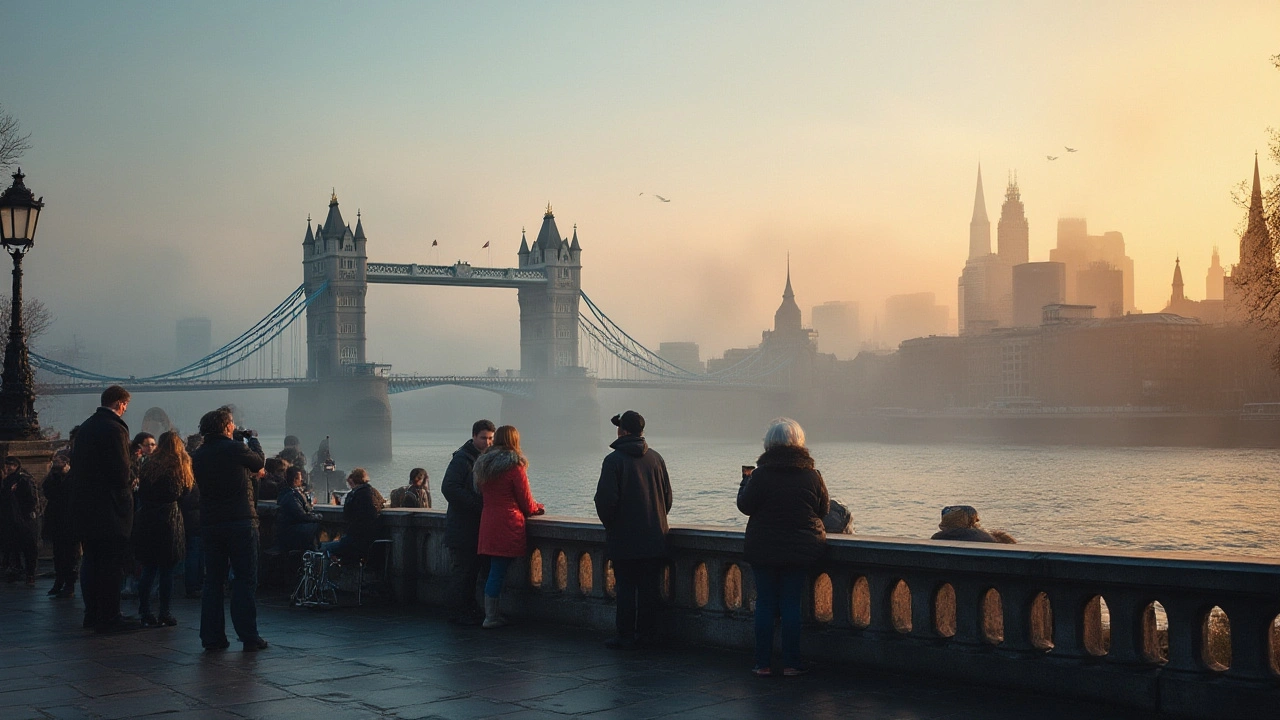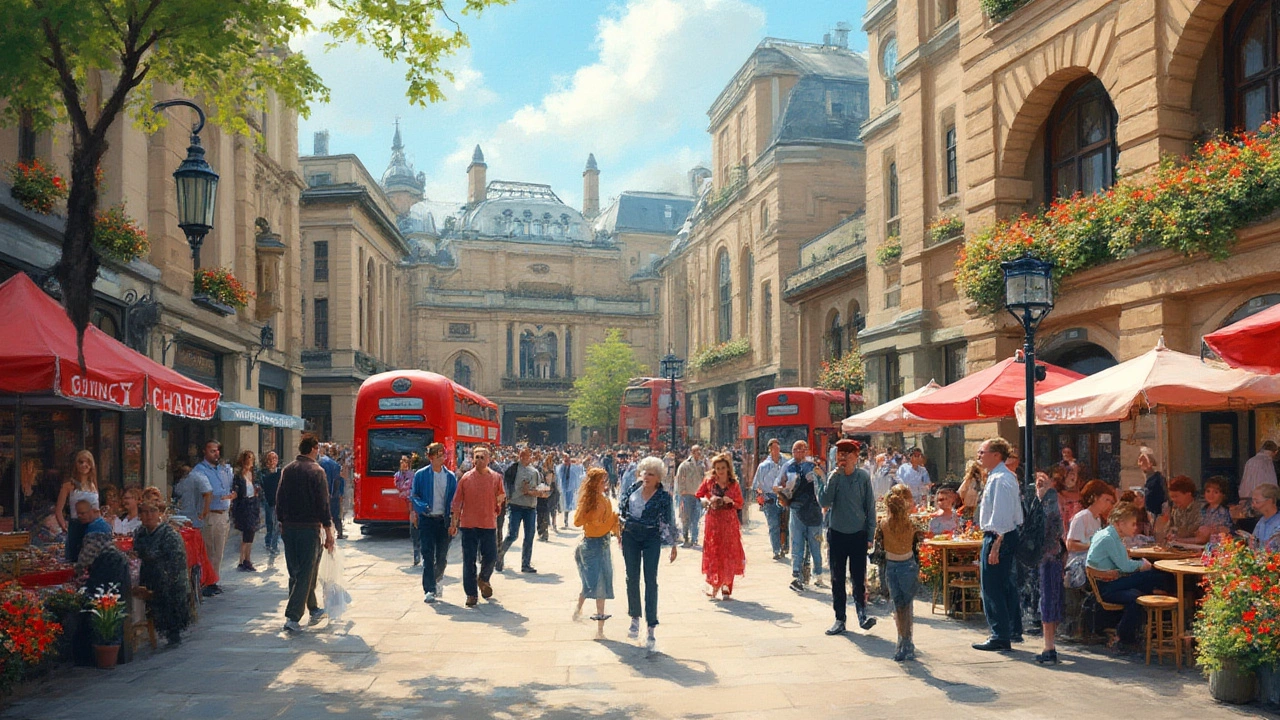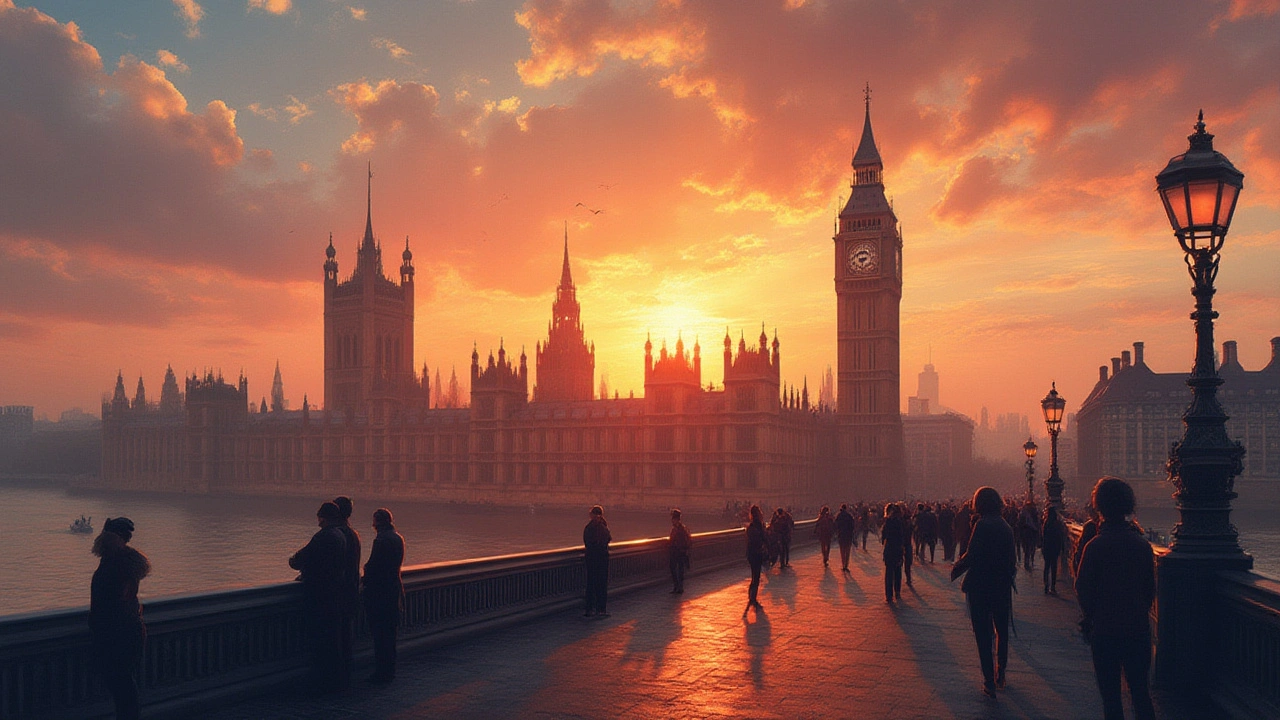Must-See Landmarks in London: Exploring World-Class Architecture and Hidden Gems

London never really sits still, does it? Whether you’re a lifelong local, newcomer, or someone just passing through on the Tube, the city bombards you with a wild mix of old-school grandeur and glass skyscraper shininess. You see it in the way Borough Market’s food smells waft past the sharp lines of the Shard, or how centuries-old pubs rub shoulders with ultra-modern galleries in Lambeth. There’s this feeling of constant movement but also depth—every street layered with secret stories, every landmark a chapter in a book way thicker than you expect. If you grabbed your Oyster Card, set out with a curious eye, and looked past the obvious, what would you notice? A world of iconic sights and lesser-known gems, waiting just past the next corner. Let’s skip the tourist cliché and get stuck into the city’s architectural marvels—and maybe spark that itch for your next discovery.
London’s Timeless Icons and Hidden Corners
For most people, landmarks in London start with Big Ben and stumble through a haze of red buses and rainy postcard scenes. The real London, the one you live in or wish you did, feels different once you pay attention to the details. The city’s architecture isn’t just about photographs or posing with pigeons at Trafalgar Square; it’s the skeleton of history, memory, and layered cultures. You start seeing more when you slow down.
Take St Paul’s Cathedral—designed by Sir Christopher Wren after the Great Fire of 1666. It’s impossible to ignore on the skyline, especially with its gleaming dome framed between the glass teeth of One New Change shopping centre. But not everyone knows the story of the Whispering Gallery, where even the softest secret spoken against the wall travels all the way around the dome. Try it yourself before the next school group piles in. Down in the crypt, you’ll find the tomb of Lord Nelson but also tributes to forgotten artists, engineers, and other Londoners who helped shape the city.
Walk west and you’ll hit Westminster Abbey, another heavyweight—site of coronations, royal weddings, and not-so-quiet resting place of the country’s greats. Poets’ Corner is a geek’s paradise; Dickens, Austen, Chaucer, and Tennyson share silent company here. The Abbey is the perfect cross between a museum and a sacred space—a place that still hosts annual Remembrance Day ceremonies, as well as quiet moments for those who want something more than a selfie.
The British Museum is a treasure chest: Greek marbles, Egyptian mummies, the Rosetta Stone—you probably know the drill. But skip the crowds and look for the less-obvious. The Enlightenment Gallery (Room 1), with jars filled with Victorian oddities, tells the story of how London’s thinkers tried to catalogue the endless mystery of the world. If you’re a fan of quirky trivia, check the museum’s website for late-night openings and one-off tours—they’re often less crowded, and sometimes include pop-up talks about artifacts most people overlook.
Sure, Buckingham Palace is on every Top 10 list, but did you know the Queen’s Guard ceremony times sometimes change unexpectedly? If you don’t want to be crushed by crowds, pop round to the side streets for a better view (or even check out Clarence House for a quieter royal fix). During summer, the State Rooms at the Palace open to the public, which is hands down one of those "do it once in your life" opportunities.
Looking for something less obvious? Check out the Seven Noses of Soho—a peculiar set of sculpted noses (yes, noses!) hidden on buildings by artist Rick Buckley in the 1990s. Locals say those who find all seven will be rewarded with infinite wealth—the kind of tall tale that makes London, well, London.

The Modern and The Quirky: London’s Boldest Architecture
No one can accuse London of being stuck in the past. The skyline shifts constantly, sprouting bold shapes that spark debates at every pub table. Think about The Gherkin (officially 30 St Mary Axe). Opened in 2004, this glassy bullet-shaped tower redefined the City’s silhouette. It’s home to offices, but also houses a top-floor lounge where you can down a Negroni with an unmatched city view. Here's a tip: during Open House London each September, you might get the chance to climb up for free—just don’t forget to book way ahead.
Then there’s The Shard—tallest building in the UK since 2012, and sometimes visible from as far as Hampstead Heath. With 95 storeys slicing the sky (and a wild 11,000 glass panels), the viewing platform on floors 68-72 gives you a near-flying look at the chaos below. The restaurants inside—Aqua Shard, Oblix, Ting—serve food with a view, but if you want to skip the bill, check nearby bars in London Bridge with windows facing up. The best free photos are often snapped outside at golden hour, when the glass lights up like a beacon.
What about the Tate Modern? Once a power station, Sir Giles Gilbert Scott’s brute box of bricks is now a top contemporary art museum. The switch from smoke to surreal art sums up London’s habit of recycling its landmarks. The Turbine Hall, home to yearly jaw-dropping installations (remember the giant spider, or Ai Weiwei’s sunflower seeds?), is free to enter. And if you want to cheat the massive queues at the main entrance, take the riverside path from Waterloo and join at the smaller south door.
The London Eye—it’s touristy, but there’s something about seeing all of London through a raindrop-flecked glass pod. Every June, the Eye adds special Pride pods—rainbow colours and live DJs that pack out quick. Travel tip? Late-night spins mean fewer people and starrier views.
Not everything huge has to be grand: London’s got a knack for making the ordinary suddenly extraordinary. Leadenhall Market, with its Victorian painted roof and curved glass, has starred in Harry Potter films but also booms as a lunchtime escape for City workers. Try wandering here at twilight, when the shops shut but the lights cast deep, cinematic shadows.
The Barbican Centre is another rebel—vast concrete towers surrounding lush gardens, a lake, and an arts centre that hosts everything from classical concerts to James Bond marathons. If you’re not into brutalist architecture, you might reconsider after a stroll around the Barbican Conservatory, a steamy tangle of palms and cacti you’d never expect in the heart of the city. Every spring, rare plant tours sprout up, so keep an eye on their events page.
London’s newest icon? The Battersea Power Station’s rebirth as a playground for foodies, shoppers, and Instagram hunters. It reopened in 2022 after decades on ice. Eating bao buns under the original turbines or splashing out at Apple’s flagship store is something nobody from 1980s London would have predicted.

Exploring London’s Architectural Diversity: Practical Tips and Surprising Facts
London packs a delicious punch when it comes to contrasts—Georgian squares next to steel-and-glass towers, churches hidden behind graffiti-splashed railway arches, and unexpected wild gardens sprouting in car parks. This isn’t a city best explored by car. Lace up comfortable shoes, grab a contactless card, and let the city surprise you block by block.
The Tube makes short work of big sights, but stick to buses or even hire a Santander Cycle for close-up street views. A no-fail route for architecture geeks: hop on the number 11 bus from Liverpool Street, snaking through the financial district, Westminster, and Chelsea, past twenty iconic buildings. For a cheap Thames cruise, try the Thames Clippers boats with the same Oyster Card you use on the Tube—cheaper than most tourist cruises but with all the same Instagram moments.
For families, look out for “Open House Weekend” every September. Hundreds of usually shut-away buildings throw open their doors for free, from Art Deco tube stations to jaw-dropping rooftop gardens like the Walkie-Talkie’s Sky Garden. Most events sell out weeks ahead, so set a calendar reminder and nab your tickets early.
Don’t forget about London’s experimental scene. There’s the eco-friendly Crystal in the Docklands, designed for energy efficiency, and Dalston’s Curve Garden—a community-built green space grown in the shadow of old gasworks. South of the river, Peckham Levels turns a bland car park into a hub of food markets, workshops, and city views even locals rave about.
If you’re into stats, have a look at how some of London’s top landmarks stack up:
| Landmark | Year Completed | Architectural Style | Notable Feature |
|---|---|---|---|
| St Paul’s Cathedral | 1710 | Baroque | Whispering Gallery |
| The Shard | 2012 | Neo-Futurist | 95 Floors |
| Tate Modern | 2000 | Industrial Conversion | Turbine Hall |
| Westminster Abbey | 1245 (current) | Gothic | Poets’ Corner |
| Leadenhall Market | 1881 (current) | Victorian | Filming Location |
| Barbican Centre | 1982 | Brutalist | Conservatory |
One last thing: Londoners are proud of their green spaces. The city’s Royal Parks—Hyde, Regent’s, and St. James’s—are dotted with historical follies and monuments, perfect for those who prefer background architecture while picnicking. Kew Gardens often hosts summer architecture walks, pointing out hidden Victorian marvels behind rare orchids.
At Christmas, famous sites light up for the season; Kew’s festive illuminations and Somerset House’s ice rink transform old structures into magical playgrounds. Summer brings festivals—Southbank Centre turns its riverside roof garden into a buzzing outdoor bar, complete with live music framed by the city’s architectural mash-up.
To wrap it up, the city’s best architecture isn’t always the flashiest. The old Roman city wall snaking through Tower Hill station, the Art Deco curves of the Daily Express building on Fleet Street, or the rainbow-painted facades in Notting Hill—each one is a reminder that in London, history isn’t just in museums, it’s right under your feet (and sometimes above your head if you remember to look up). The next time you’re out and about, try taking a left turn where you’d usually go right. That’s where real discoveries start.